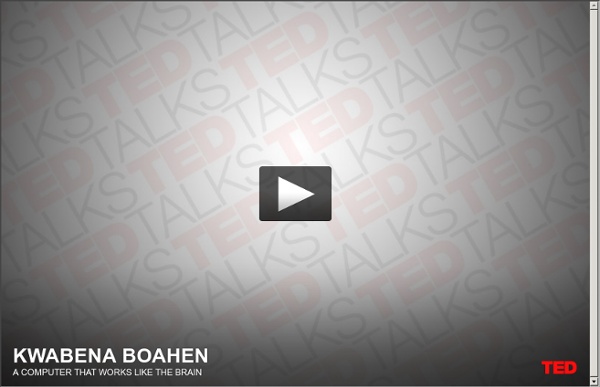Kwabena Boahen on a computer that works like the brain

Episodes - Brain Science Podcast
Episode 1-10 can now be purchased for download as a single zip file. Other episodes and transcripts may be purchased separately. Please see the episode show notes for links. Mind Wide Open: A general introduction to why neuroscience matters, based on Mind Wide Open: Your Brain and the Neuroscience of Everyday Life, by Steven Johnson.
The Singularity is Far: A Neuroscientist's View
David J. Linden is the author of a new book,The Compass of Pleasure: How Our Brains Make Fatty Foods, Orgasm, Exercise, Marijuana, Generosity, Vodka, Learning, and Gambling Feel So Good. He is a professor of neuroscience at The Johns Hopkins University School of Medicine and Chief Editor of the Journal of Neurophysiology. Ray Kurzweil, the prominent inventor and futurist, can't wait to get nanobots into his brain. "By the late 2020s, nanobots in our brain, that will get there noninvasively, through the capillaries, will create full-immersion virtual-reality environments from within the nervous system. Of course, there's no reason why these nanobots must be restricted in their manipulations to the sensory portions of the brain. At that point, boundaries between brain, mind, and machine would fall away. Image: Harris KM, Fiala JC, Ostroff L. I am a neurobiologist and I have spent the past 28 years engaged in studies of the cellular and molecular basis of memory and cognition.
Related:
Related:




Kwabena Boahen argues that the miniaturisation of transistors leads to them becomming more like synapses and less like electrical components: sometimes they don't output a current when they should and sometimes they leak a current when they shouldn't. Chipdesign neeeds a paradigm shift: not accurate central processesing the bottleneck but more connections with fuzy results. Compare this to TED talks about the brain by Henry Markram and others. by kaspervandenberg Dec 22